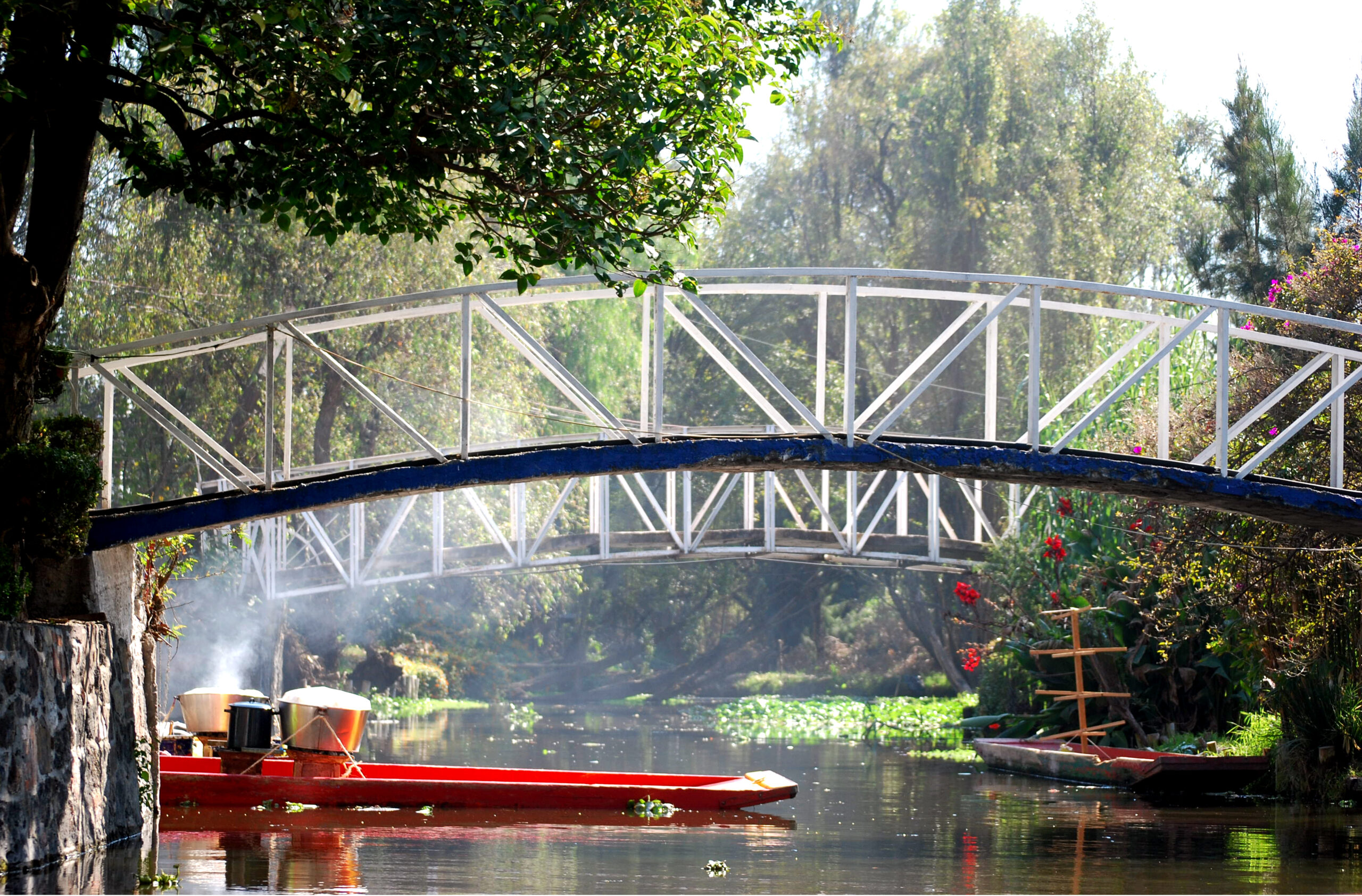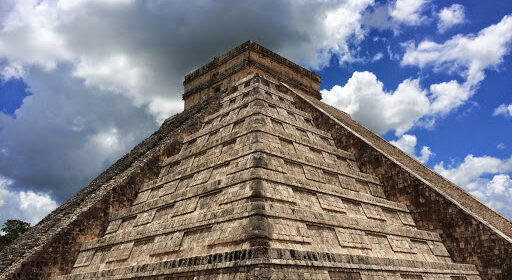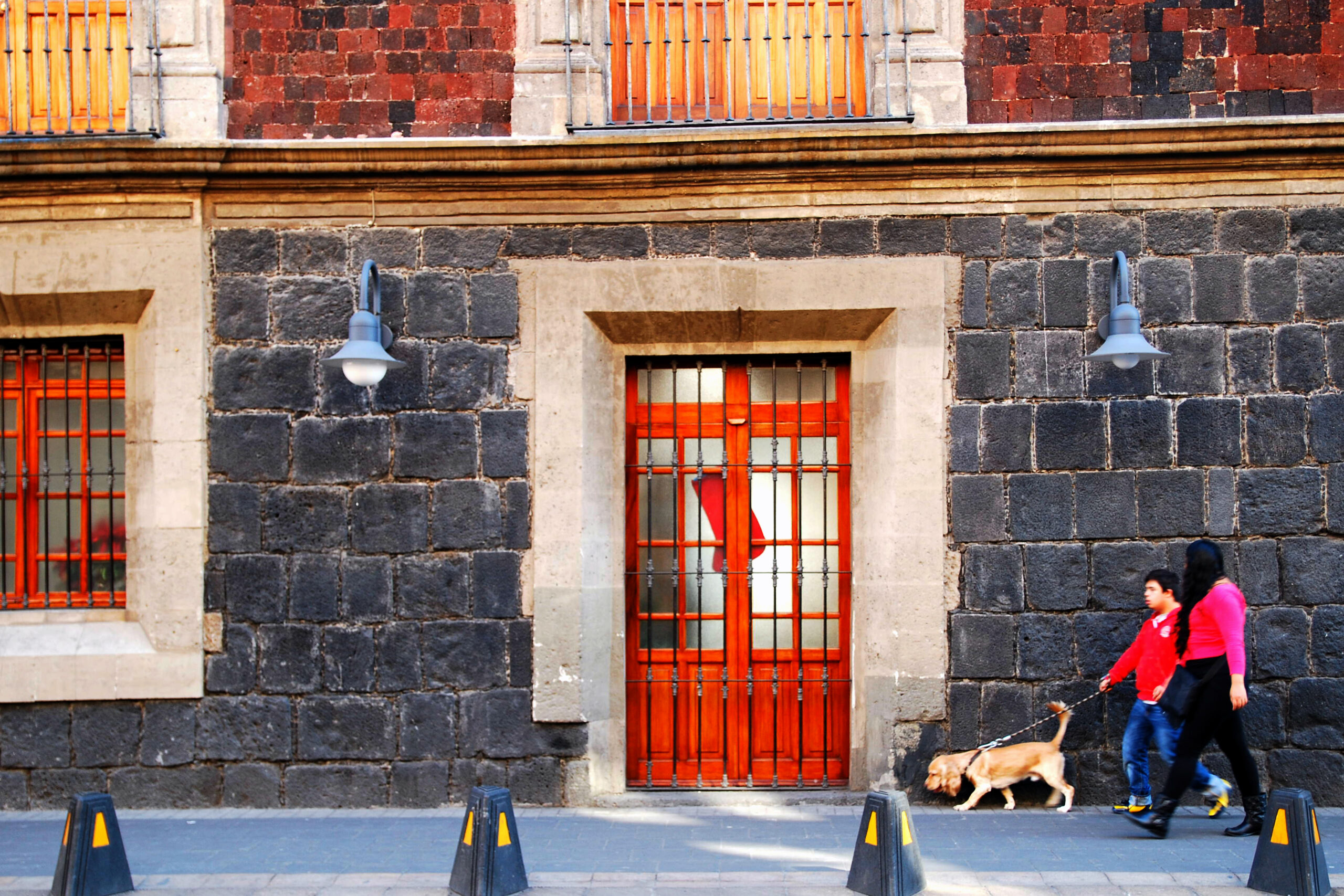Back to Mexico
Back to Mexico City Itinerary
Home to a plethora of museums, historical buildings, artwork, and street food coalesced within the boundaries of a modern city, Mexico City is a fantastic tourist destination. Although the city has received a lot of negative publicity due to the crime, traffic and corruption, it actually is not that different from any other large metros around the world. Being cautious about navigating the city in the same way one would do in Chicago, New York, or London should be enough to keep you safe. We ventured out to multiple areas in the city during our stay, even walked during the late hours with no trouble (and no apparent signs of crime) in the neighborhoods like Zona Rosa, Condesa, and Zocalo.
Having said all that, below is a list of places that a traveler interested in history, art, and cityscape should not miss –
1. Chapultepec Park
 |
| Looking west from Angel de la Independencia |
A long walk to the Musee de la Antropology was a worthwhile one in the end. At ~MXN $65 per person for foreigners, you can easily spend 4-8 hours here immersing yourselves in the 22 permanent exhibits. All exhibits revolve around the evolution of the cultures in various parts of Mexico over the last few centuries and decades. With the deluge of information you’ll have to swim in, knowledge of Spanish would help since most of the explanations are not in English. Best strategy to cover everything yet retaining the knowledge gained would be to follow the numbers in the map. Feel free to take photos, but please do not run through the exhibits. Just pause and visualize for a few moments, and connect the dots in history from a third party perspective. This museum would easily influence a visitor to enhance their perception about history and culture.
 |
| Temporary Exhibit for Luz |
If you want a quick bite, the restaurant at the ground floor is decently priced and has a wide menu with pretty tasty food. Service is slow, so go through the ordeal quickly lest you lose crucial time from the day.
If the other museums are open, it is a great idea to swing by the Musee de Modern Arts and on the other side of the park, the Museum of National History. These two are not close to the Musee de la Antropology but worth a quick look since you are already in this area. Also worth visiting is the Chapultepec Castle after a 20 minute hike up to the top of the hill.
 |
| Street vendors in Chapultepec Park |
Otherwise, take it slow, take a stroll through the park, eat some street food, sit in a quiet area by the water and do people-watching. I heard it is a good idea to leave the park before or at most 30 minutes after sunset/dark.
Check out the Gallery for Museum of Anthropology
2. Zona Rosa
Known as the happening part of the city, Zona Rosa (or Pink zone) contains ubiquitous bars and nightlife attractions, wide streets, multiple foreign embassies, and several upscale shops. This is also a LGBT friendly community, and home to offices of some of the well known multinationals.
Zona Rosa and La Condesa has some of the most well known restaurants in the city.
A major tourist attraction in this area is – Angel de la Independencia (Angel of Independence), which was built to commemorate the start of the Mexican war of independence.
Plan to spend ~30 minutes here
 |
| Centro Historico / Zocalo |
3. Centro Historico (Zocalo)
Centro Historico, located in the north-east part of the city, is home to several historical sites,
museums, cathedrals and other attractions. Plan to spend an entire day here to immerse into the culture and history of the wonderful country. Knowledge of Spanish is recommended. Below are some of the must visit POIs –
a. Cathedral Metropolitana
Probably one of the best displays of exquisite artwork in this area, built in the 16th century, this cathedral is the oldest and largest in Latin America. Groundbreaking paintings, vivid colors and sculptures are trumped by the intricate history buried underneath. This cathedral was built on the site of the Ancient temples of the Aztec God of War. Templo Mayor, located next door corroborates that finding.
– Plan on spending <1 hour here
– Entrance cost – Free
b. Templo Mayor
This is the archaeological site of one of the oldest temples/pyramids in Mexico City (then Tenochtitlan). Although you can see the ruins from outside, the museum and the full extent of an ancient city surrounded by the city sky is a unique setting.
The temple is dedicated to multiple Gods in Aztec history, and has been rebuilt/reconstructed at least four times. Once inside, you will be able to see the ruins from all four stages of the build-up. Ongoing restoration programs are able to reconstruct and display some of the monuments, structures, and sites having significant importance. Although walking through the ruins will not feel like you are actually in an ancient town, just visualizing the grandeur of the pyramid/temple will surely cause eeriness.
The museum at the end of the site tour (self-guided) is a treat to history buffs. With 8 different exhibits, it does a great job at showing the anthropological, archaeological, cultural and historical intricacies of the ancient Aztec civilization. Many of our misunderstandings about the Mayan civilization got clarified from our visit to the museum.
– Plan on spending ~20 minutes in the site and ~1.5 Hours in the Museum
– Entrance cost – MXN $65 per person
c. Palacio National
Built on the site of the palace of the Aztec ruler Moctezuma, the national palace is home to some of the national houses (treasury. archives, etc.). It is a huge facility with probably the tightest security of all the museums/historic sites in the city. The second floor of the palace is decorated with some of the best works of Diego Rivera. The murals are scintillating with the narration of historical events, mundane daily lives of the folk, and depiction of the cultural progress of Mexico.
There are free tours in different languages. We overheard some of the descriptions of the guides and thought that if you have some background knowledge of the culture and have little bit of patience, you can understand decent amount of the stories from the murals.
– Plan on spending ~2 hours
– Entrance cost – Free
d. Secretaria de Education
Possibly the most underrated of all the historic sites that contains a huge amount of art history. There are at least 100 murals in the inside walls of the building. Diego Rivera worked on these murals in the 1920’s. Thematically, these are about ancient culture, Spanish invasion, war of independence, communism, and some of the key events in the daily lives of the ancient and modern folk. For a traveler, looking to understand the history of the country through breathtaking display of art, this is a must visit.
– Plan on spending 1-2 Hours
– Entrance cost – Free
e. Bellas Artes
Located next to the Alameda Park, this museum is nestled under a beautiful building with a large colorful dome on top. The architecture and sculptures outside the building, along with the plaza in front makes it a place worthwhile to spend a quaint afternoon/evening at. Apart from people watching and architecture admiring, lazying around in this area seems to be a popular afternoon activity for locals.
This museum has an astonishing collection of murals and paintings from the Mexican revolution from around the country. But in my opinion, the best one is the “Man, Controller of the Universe” by Diego Rivera. This was the recreated mural of the original, later destroyed, “Man at the crossroads” in the Rockefeller center in midtown, NYC. We spent ~30 minutes adoring the beautiful painting. Along the three floors, there are numerous works by Rivera, Jose Clemente Orozco, Roberto Montenegro, Alfaro Siquiros, et al.
– Plan on spending 2-3 Hours
– Entrance Cost – MXN $60
f. Mezcal and Tequila Museum
Although not suitable for traveler having kids in the group, this is a unique museum located next to the Plaza Garibaldi. Should not take you more than 30-45 minutes to explore the museum, and they give out one free mezcal and tequila with each ticket purchase. Slightly overpriced, but very interesting to hear how each drinks are different and how they are made. Hard to get any museums of this sort in other parts of the world as the drinks Mezcal and Tequila are indigenous to Mexico.
In the restaurant downstairs, there are food and other cocktail/drinks options that are slightly overpriced. Overall, you can skip this if you do not have time. Only include if you are hitting Plaza Garibaldi in the evening and are in a mood to try out mezcals while listening to Mariachi bands.
– Plan on spending <1 Hour in the museum, but 1-2 Hours in the shop/restaurant
– Entrance Cost – MXN $60 (includes the museum, one mezcal and one tequila)
g. Plaza Garibaldi
This is a perfect place to end your tiring day. This is a large square with shops and buildings all around. Mariachi bands, singers, and performers roam in this square performing acts all day (especially in the late afternoons). You can catch a glimpse of their acts, take photos, take a stroll around the marketplace, grab a quick bite of comida tipica, or even sit back and relax with some cerveza in your hand.
– Spend whatever amount of time you want
– Free











 River, this building is a masterpiece of history and architecture. The surrounding area of the buildings have several interesting vista points to the river and the city. During the Canada day celebrations, the Centennial flame looked marvelous in the backdrop of the gatherings.
River, this building is a masterpiece of history and architecture. The surrounding area of the buildings have several interesting vista points to the river and the city. During the Canada day celebrations, the Centennial flame looked marvelous in the backdrop of the gatherings. history it carries. Connecting the Rideau river with the Ottawa river was an engineering marvel. The stepped structure, the periodic opening and closing of the gates and the sheer history of the ups and downs in the local economy caused by the canal are not to be missed. Walking up and down the two sides of the canal with coffee in hand was a fun activity with people watching and exploring the famous hotel next to the canal.
history it carries. Connecting the Rideau river with the Ottawa river was an engineering marvel. The stepped structure, the periodic opening and closing of the gates and the sheer history of the ups and downs in the local economy caused by the canal are not to be missed. Walking up and down the two sides of the canal with coffee in hand was a fun activity with people watching and exploring the famous hotel next to the canal.





 of offering exquisite Gothic Revival artwork inside the cathedral. Interestingly enough for a cathedral, the stained glass paintings (my favorite type of artwork inside historic cathedrals), depict religious history of Montreal instead of typical biblical stories. The admission was CAD 5.00 per person, and it was closed for visitors for multiple weddings. Therefore there was a line too, but it was worth the wait for the charm and uniqueness of the building.
of offering exquisite Gothic Revival artwork inside the cathedral. Interestingly enough for a cathedral, the stained glass paintings (my favorite type of artwork inside historic cathedrals), depict religious history of Montreal instead of typical biblical stories. The admission was CAD 5.00 per person, and it was closed for visitors for multiple weddings. Therefore there was a line too, but it was worth the wait for the charm and uniqueness of the building. in various water-sports, and other thrill rides. There are artificial beaches created too, which were lame to us as being a Florida resident. But I can see the necessity of having warm sandy beaches in this part of the continent. A walk along the river, while enjoying the views of this beautiful city, will take you to the historic Clock Tower. Built by Gillette and Johnson, who also built the Big Ben and other clock towers around the world, has a 160 odd step staircase to go atop. Needless to say, the wide angle view of the city from the top was mesmerizing.
in various water-sports, and other thrill rides. There are artificial beaches created too, which were lame to us as being a Florida resident. But I can see the necessity of having warm sandy beaches in this part of the continent. A walk along the river, while enjoying the views of this beautiful city, will take you to the historic Clock Tower. Built by Gillette and Johnson, who also built the Big Ben and other clock towers around the world, has a 160 odd step staircase to go atop. Needless to say, the wide angle view of the city from the top was mesmerizing. long Montreal Jazz Festival was taking place during this weekend, and we walked up to Quartier des Spectacles and enjoyed the music all evening. Barring the festival, there are many Jazz bars around this area where you can enjoy live Jazz performed by local and traveling artists alike. But it is highly recommended to plan your trip during the annual Jazz Fest to enjoy some of the most memorable music festivals in the country. More information
long Montreal Jazz Festival was taking place during this weekend, and we walked up to Quartier des Spectacles and enjoyed the music all evening. Barring the festival, there are many Jazz bars around this area where you can enjoy live Jazz performed by local and traveling artists alike. But it is highly recommended to plan your trip during the annual Jazz Fest to enjoy some of the most memorable music festivals in the country. More information 




